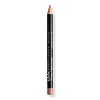What's inside
What's inside
 Key Ingredients
Key Ingredients

 Benefits
Benefits

 Concerns
Concerns

 Ingredients Side-by-side
Ingredients Side-by-side

Sorbitan Isostearate
EmulsifyingIsocetyl Stearate
EmollientPhenyl Trimethicone
Skin ConditioningPolyethylene
AbrasiveEuphorbia Cerifera Wax
Butyrospermum Parkii Butter Unsaponifiables
Skin ConditioningBeeswax
Emulsion StabilisingSimmondsia Chinensis Seed Oil
EmollientCaprylic/Capric Triglyceride
MaskingNylon-12
Octyldodecanol
EmollientPolyglyceryl-2 Diisostearate
EmulsifyingSilica
AbrasiveCopernicia Cerifera Wax
Hydrogenated Coconut Oil
EmollientTocopherol
AntioxidantVp/Hexadecene Copolymer
Stearalkonium Hectorite
Gel FormingStearyl Glycyrrhetinate
Skin ConditioningPropylparaben
PreservativePropylene Carbonate
SolventSorbitan Isostearate, Isocetyl Stearate, Phenyl Trimethicone, Polyethylene, Euphorbia Cerifera Wax, Butyrospermum Parkii Butter Unsaponifiables, Beeswax, Simmondsia Chinensis Seed Oil, Caprylic/Capric Triglyceride, Nylon-12, Octyldodecanol, Polyglyceryl-2 Diisostearate, Silica, Copernicia Cerifera Wax, Hydrogenated Coconut Oil, Tocopherol, Vp/Hexadecene Copolymer, Stearalkonium Hectorite, Stearyl Glycyrrhetinate, Propylparaben, Propylene Carbonate
Paraffinum Liquidum
EmollientDiisostearyl Malate
EmollientHydrogenated Styrene/Isoprene Copolymer
Paraffin
PerfumingButyrospermum Parkii Butter
Skin ConditioningDipentaerythrityl Tetrahydroxystearate/Tetraisostearate
Skin ConditioningPolyethylene
AbrasiveHydrogenated Polyisobutene
EmollientOctyldodecanol
EmollientCaprylic/Capric Triglyceride
MaskingSynthetic Wax
AbrasiveNylon-12
Butyrospermum Parkii Butter Unsaponifiables
Skin ConditioningIrvingia Gabonensis Kernel Butter
Skin ConditioningEthylhexyl Palmitate
EmollientParfum
MaskingHydrogenated Coco-Glycerides
EmollientHydrogenated Microcrystalline Wax
Emulsion StabilisingCetyl PEG/PPG-10/1 Dimethicone
EmulsifyingHexyl Laurate
EmollientPolyglyceryl-4 Isostearate
EmulsifyingOryzanol
Skin ConditioningTribehenin
EmollientCI 45380
Cosmetic ColorantAmmonium Glycyrrhizate
MaskingTocopheryl Acetate
AntioxidantSorbitan Isostearate
EmulsifyingTriethoxycaprylylsilane
Isopropyl Titanium Triisostearate
EmollientLactic Acid
BufferingPalmitoyl Tripeptide-1
Skin ConditioningBHT
AntioxidantTocopherol
AntioxidantMica
Cosmetic ColorantTin Oxide
AbrasiveSilica
AbrasiveCalcium Aluminum Borosilicate
Calcium Sodium Borosilicate
Synthetic Fluorphlogopite
CI 77891
Cosmetic ColorantCI 77491
Cosmetic ColorantCI 15850
Cosmetic ColorantCI 15985
Cosmetic ColorantCI 42090
Cosmetic ColorantCI 75470
Cosmetic ColorantCI 19140
Cosmetic ColorantCI 45410
Cosmetic ColorantCI 73360
Cosmetic ColorantCI 17200
Cosmetic ColorantCI 77742
Cosmetic ColorantParaffinum Liquidum, Diisostearyl Malate, Hydrogenated Styrene/Isoprene Copolymer, Paraffin, Butyrospermum Parkii Butter, Dipentaerythrityl Tetrahydroxystearate/Tetraisostearate, Polyethylene, Hydrogenated Polyisobutene, Octyldodecanol, Caprylic/Capric Triglyceride, Synthetic Wax, Nylon-12, Butyrospermum Parkii Butter Unsaponifiables, Irvingia Gabonensis Kernel Butter, Ethylhexyl Palmitate, Parfum, Hydrogenated Coco-Glycerides, Hydrogenated Microcrystalline Wax, Cetyl PEG/PPG-10/1 Dimethicone, Hexyl Laurate, Polyglyceryl-4 Isostearate, Oryzanol, Tribehenin, CI 45380, Ammonium Glycyrrhizate, Tocopheryl Acetate, Sorbitan Isostearate, Triethoxycaprylylsilane, Isopropyl Titanium Triisostearate, Lactic Acid, Palmitoyl Tripeptide-1, BHT, Tocopherol, Mica, Tin Oxide, Silica, Calcium Aluminum Borosilicate, Calcium Sodium Borosilicate, Synthetic Fluorphlogopite, CI 77891, CI 77491, CI 15850, CI 15985, CI 42090, CI 75470, CI 19140, CI 45410, CI 73360, CI 17200, CI 77742
 Reviews
Reviews

Ingredients Explained
These ingredients are found in both products.
Ingredients higher up in an ingredient list are typically present in a larger amount.
Butyrospermum Parkii Butter Unsaponifiables comes from shea butter.
Unsaponifiables means the butter is not saponified, or it has not been turned into soap using an alkali reaction.
This ingredient contains Vitamin E, sterols, and many antioxidants. These compounds help hydate your skin.
Learn more about Butyrospermum Parkii Butter UnsaponifiablesThis ingredient is an emollient, solvent, and texture enhancer. It is considered a skin-softener by helping the skin prevent moisture loss.
It helps thicken a product's formula and makes it easier to spread by dissolving clumping compounds.
Caprylic Triglyceride is made by combining glycerin with coconut oil, forming a clear liquid.
While there is an assumption Caprylic Triglyceride can clog pores due to it being derived from coconut oil, there is no research supporting this.
Learn more about Caprylic/Capric TriglycerideNylon-12 is a polymer. It is derived from 12-aminododecanoic acid, an omega-amino fatty acid
According to a manufacturer, it is a talc substitute. Like talc, nylon-12 gives products a satin feel. The manufacturer also claims this ingredients does not block pores and has moderate oil absorption.
This ingredient may not be reef-safe.
Learn more about Nylon-12Octyldodecanol is a fatty alcohol. It is primarily used to enhance the texture of products.
As an emulsifier, Octyldodecanol helps prevent the oils and waters from separating. It also prevents ingredients from creating foam when shaken.
Octyldodecanol is created by reducing fatty acid to an alcohol.
Due to its high molecular weight, it does not get absorbed into the skin.
Learn more about OctyldodecanolPolyethylene is a synthetic ingredient that helps the skin retain moisture. It is a polymer.
It is also typically used within product formulations to help bind solid ingredients together and thicken oil-based ingredients. When added to balms and emulsions, it helps increase the melting point temperature.
Silica, also known as silicon dioxide, is a naturally occurring mineral. It is used as a fine, spherical, and porous powder in cosmetics.
Though it has exfoliant properties, the function of silica varies depending on the product.
The unique structure of silica enhances the spreadability and adds smoothness, making it a great texture enhancer.
It is also used as an active carrier, emulsifier, and mattifier due to its ability to absorb excess oil.
In some products, tiny microneedles called spicules are made from silica or hydrolyzed sponge. When you rub them in, they lightly polish away dead skin layers and enhance the penetration of active ingredients.
Learn more about SilicaSorbitan Isostearate is an emulsifer and cleaning agent. It is created from isostearic acid and sorbitol.
As an emulsifier, Sorbitan Isostearate prevents oils and water from separating.
Due to its isostearic acid base, it may not be safe for Malassezia or fungal acne.
Learn more about Sorbitan IsostearateTocopherol (also known as Vitamin E) is a common antioxidant used to help protect the skin from free-radicals and strengthen the skin barrier. It's also fat soluble - this means our skin is great at absorbing it.
Vitamin E also helps keep your natural skin lipids healthy. Your lipid skin barrier naturally consists of lipids, ceramides, and fatty acids. Vitamin E offers extra protection for your skin’s lipid barrier, keeping your skin healthy and nourished.
Another benefit is a bit of UV protection. Vitamin E helps reduce the damage caused by UVB rays. (It should not replace your sunscreen). Combining it with Vitamin C can decrease sunburned cells and hyperpigmentation after UV exposure.
You might have noticed Vitamin E + C often paired together. This is because it is great at stabilizing Vitamin C. Using the two together helps increase the effectiveness of both ingredients.
There are often claims that Vitamin E can reduce/prevent scarring, but these claims haven't been confirmed by scientific research.
Learn more about Tocopherol